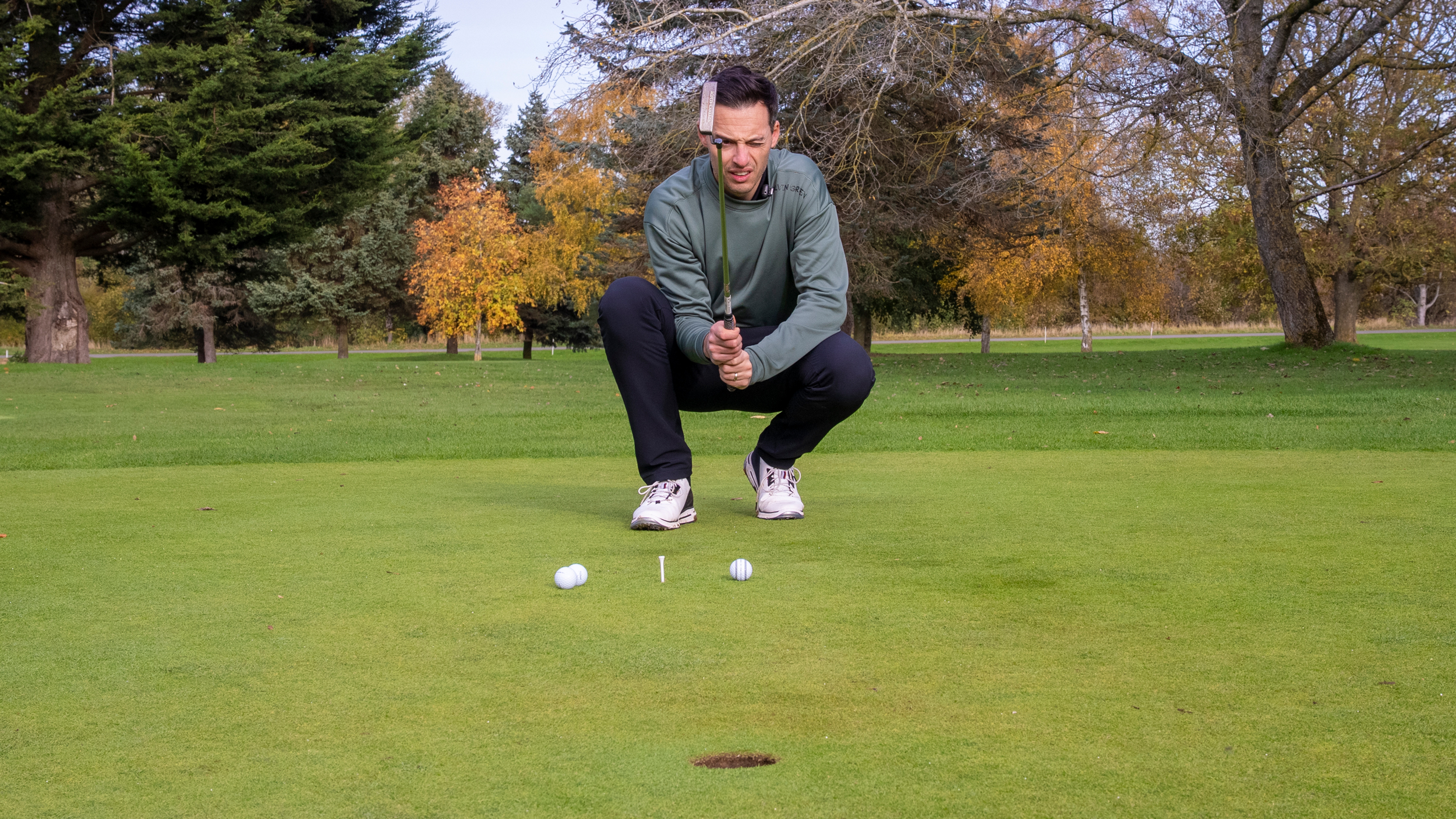No Line Vs Line Vs Stripe Ball Test: Which Holes More Putts?
In an attempt to hole more short-range putts, Joel Tadman conducted a test of three ball alignment features to see which one achieved the best results


In the last year or so I’ve tried all sorts of methods in an attempt to become bullet proof from the inside 10 foot range. It feels like such a vital area of the game when it comes to scoring, be it capitalising on a well-judged approach shot or salvaging par after an average chip.
The best golf balls offer a wealth of graphic options and other visual stimuli to help golfers gain an advantage in this area - be it lines, crosses or something a little more elaborate. I’ve tried pretty much everything, experiencing success as well as failure without reaching any concrete conclusions, so I wanted to conduct a test to determine with some certainty which is the most effective graphic for me on the greens.
A post shared by Golf Monthly (@golfmonthly)
A photo posted by on
So I hit 12 putts from six feet on a flat portion of green with three different options - no line showing at all, a ‘solid’ line (traditional Pro V1 sidestamp) and a stripe design (specifically the TaylorMade TP5x Stripe), which you can watch in the video above. The results were interesting.
No line: 8/12
Single line: 11/12
Stripe: 6/12
Before you all get at me in the comments at the bottom of the page (I’m still expecting a few) about the nature of the test and how it lacks scientific credibility (for the record, I agree it does) please keep in mind it was just a fun experiment more to satisfy my own curiosity.
The scores reveal that the solid line worked best. But over the ball, there was no doubt I felt much more confident with the added visual stimuli I got from the Stripe - it felt like I could see the orientation much clearer. But the counter argument, which is perhaps reflected in the scores, is that the stripe design is quite distracting - especially when making a stroke - taking the focus away from what the putter is doing.

I’ve tried the TP5x Stripe during multiple rounds and had amazing performances from short range and some abysmal ones. Some days it felt like cheating I was so prolific, on others it made me feel completely lost, second guessing my reads and generally lacking faith in the process.
Subscribe to the Golf Monthly newsletter to stay up to date with all the latest tour news, equipment news, reviews, head-to-heads and buyer’s guides from our team of experienced experts.
The other problem with the stripe (and the line to a degree) was the extra time it took to get it aligned correctly. Placing the ball down, stepping back and looking at it from behind, holding the shaft up to check, making adjustments if needed - it all added a good 15 seconds at times to each putt.
I felt conscious of this during the test, perhaps to the point that I put rushed strokes on the ball, potentially contributing to the lower score. I appreciate this makes little sense given I was under no time pressure, but this was something I definitely felt subconsciously.

The line feels like a good middle ground - providing some help without overwhelming the senses and the results proved that. Although in competition rounds I’ve often diverted away from using a line to no line to free up my stroke and mentally focus on putting a committed stroke on it.
As someone who aims right and pulls putts online, the line when pointing at the middle of the hole on a straight putt looked off. I felt like I was having to push putts online, which admittedly worked, but it was an uncomfortable process I’d be hesitant to commit to long term.
In summary, there is unquestionably some merit in utilising the assistance golf balls can provide when it comes to alignment. Starting putts online is a critical skill and most golfers could and should take advantage of the assistance on offer.

What will work best is likely to be player dependent. The only way to know with any certainty is to try as many as you can, ideally on the course during a round to get a sense for what works under pressure.
The ‘it looks weird’ phase is one golfers often grapple with initially, to the point where they give up and revert to what they did previously. My only comment on this would be that you’re using a line because you need help to aim, so the short term pain of getting used to it should lead to long term gains.
Golf ball manufacturers acknowledge the potential benefits, which is why there’s a whole host of great options to choose from, be it the Callaway Chrome Tour Triple Track, Titleist AIM 360 or even the Srixon Q-Star Tour Divide outside of the balls featured in my test.
For me, I’ll be persisting with the standard Pro V1 sidestamp given the my results. But who knows, I may well have moved on to something else in a few weeks time.

Joel has worked in the golf industry for over 15 years covering both instruction and more recently equipment. He now oversees all equipment and video content at Golf Monthly, managing a team of talented and passionate writers and presenters in delivering the most thorough and accurate reviews, buying advice, comparisons and deals to help the reader or viewer find exactly what they are looking for.
One of his career highlights came when covering the 2012 Masters he got to play the sacred Augusta National course on the Monday after the tournament concluded, shooting a respectable 86 with just one par and four birdies. To date, his best ever round of golf is a 5-under 67 back in 2011. He currently plays his golf at Burghley Park Golf Club in Stamford, Lincs, with a handicap index of 3.1.
Joel's current What's In The Bag?
Driver: Titleist GT3, 9°, Fujikura Ventus Black 6 S shaft.
Fairway wood: Titleist TSR3, 15°
Hybrid: Titleist TSi2, 18°
Irons: Titleist T150, 4-PW
Wedges: Titleist Vokey SM10, 50°, 54° and 58°
Putter: LAB Golf DF3
Ball: 2025 Titleist Pro V1x
You must confirm your public display name before commenting
Please logout and then login again, you will then be prompted to enter your display name.